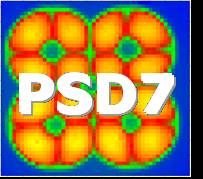Speaker
Dr
Steve Snow
(University of Manchester)
Description
The ATLAS Semi-Conductor Tracker (SCT) uses silicon strip detectors
to measure trajectories of charged particles coming from 14 TeV
proton-proton collisions at the Large Hadron Collider at CERN. The
SCT provides at least four precise space points, in the radial range
of 27 to 50 cm from the beam, for tracks within the angular
acceptance ||<2.5. The SCT is built up of 4088 modules, each
consisting of two or four silicon detectors, a hybrid carrying
several readout ASICS, and components to support, cool and align the
detectors.
We report on construction of the endcap part of the SCT, which is
built up from 1976 modules of four different flavours. A group of 16
institutes from 7 countries is nearing completion of an intensive 18
months of building all these modules. At the outset we assumed a
module assembly yield of 85% and we procured components accordingly.
In fact we have comfortably exceeded 85% yield and this paper aims
to explain how it was done. First the module specifications are
summarised, then we describe our module assembly techniques. We
detail the tests that we used for quality control of module
components and of completed modules. A key aspect of the project was
to fully standardise the final module tests and to insist that test
data from all institutes was stored in a single central database,
while leaving institutes a lot of freedom to vary their module
assembly methods to suit local circumstances. Finally we report our
experience in terms of component quality, assembly rates and testing
rates, yield of good modules and causes of lost modules
Primary author
Dr
Steve Snow
(University of Manchester)




